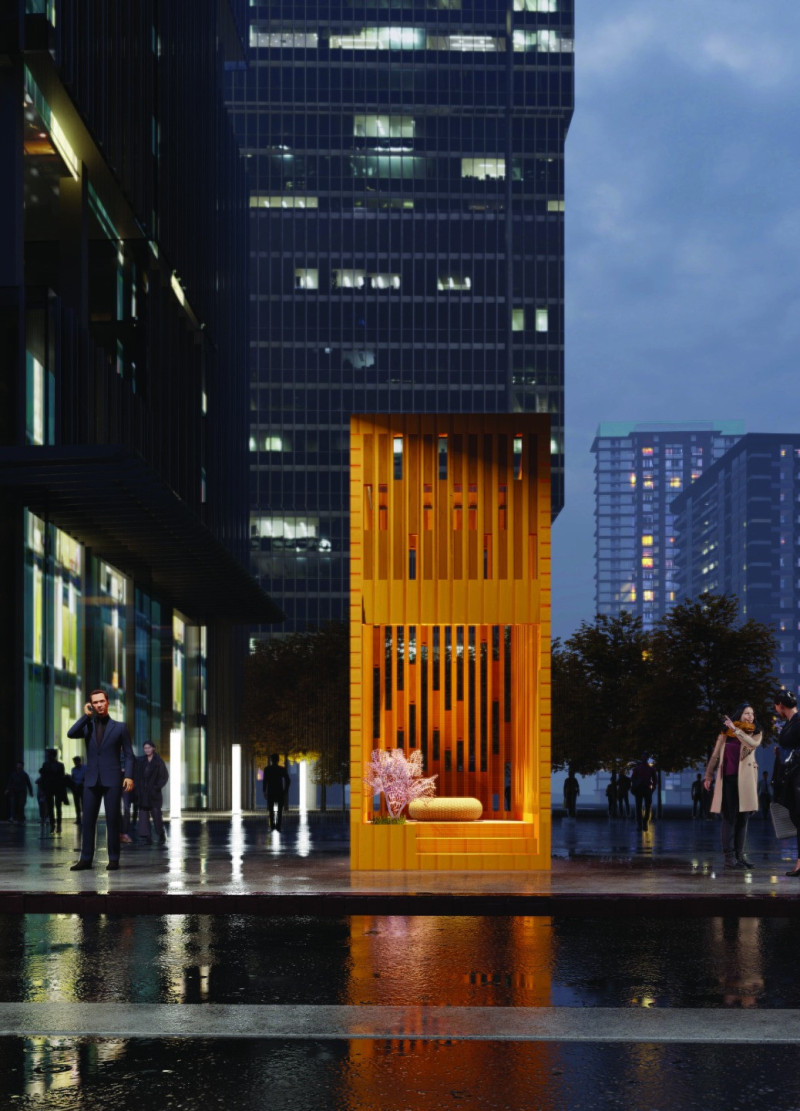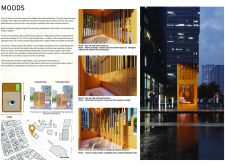5 key facts about this project
The foundation of "Mood" is based on a structural system composed primarily of timber. This choice reflects a commitment to sustainability while integrating into the city's architectural context. The timber arrangement results in flexible spaces that can be adapted to different environmental conditions, thus providing a responsive user experience.
Dynamic Spatial Configurations
One of the standout features of "Mood" is its sliding timber panels, which allow users to modify the structure’s openness and privacy levels. This design fosters an environment that responds to varying user needs, whether it’s seeking solitude or fostering social interaction. By allowing users to control their surroundings, the project emphasizes personal agency, which is a notable departure from traditional fixed architectural designs.
The panels can be fully opened to facilitate maximum daylight exposure and communal experiences or closed to create intimate, quiet spaces. This versatile spatial organization makes the design applicable to different activities, ranging from casual gatherings to meditation sessions, enhancing the usability and relevance of the structure in urban life.
Integration of Materiality and Environment
The project’s material palette primarily consists of timber, which not only serves a structural purpose but also enhances the aesthetic quality of the space. The use of timber contributes warmth and tactile comfort, creating an inviting atmosphere that contrasts with the urban environment. This material choice is crucial in developing a space that resonates with its surroundings while promoting sustainability.
The layout ensures pedestrian-friendly access, integrating seamlessly into the context of Tokyo. The overhead sliding entrance exemplifies functional design that prioritizes user experience while maintaining an open connection to the street environment. Such details reflect a careful consideration of how architecture interacts with its site.
To explore further specifics of the "Mood" project, including architectural plans, sections, and design details, readers are encouraged to delve into the presentation materials. These insights will provide a comprehensive understanding of how this architectural intervention uniquely addresses urban challenges and promotes individual and community well-being through thoughtful design.























